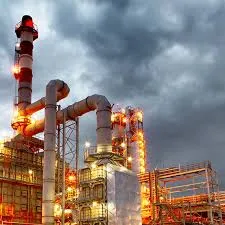
Mrz . 06, 2025 14:32 Back to list
biomass fired steam boiler
Crafting a DIY steam boiler can be both a challenging and rewarding project for skilled enthusiasts looking to leverage their expertise and technical know-how. These devices hold immense importance in various applications, from heating systems to power generation, making this project a unique blend of creativity and precision engineering. This article aims to guide you on creating a DIY steam boiler while ensuring the principles of Experience, Expertise, Authoritativeness, and Trustworthiness are integrated at each step.
5. Water Circulation Implement an efficient water circulation system to maximize heat transfer. This minimizes energy consumption and enhances the lifetime of the boiler. 6. Control Systems Install a reliable control system that monitors pressure and temperature in real time. Digital control systems can offer precision and ease of use over traditional analog setups. 7. Insulation Surround the boiler with quality insulation materials to minimize heat losses. This step not only enhances efficiency but also optimizes the safety of the surroundings by reducing the risk of external surfaces reaching dangerous temperatures. Testing and Maintenance Once constructed, thorough testing is crucial. Begin with low-pressure tests, gradually increasing to operational pressures while monitoring system stability. Regular maintenance schedules are integral to the boiler's longevity and safe operation, including routine checks for corrosion, valve performance, and heat source conditions. Enhancing Energy Efficiency Installing a balanced air-to-fuel ratio system can significantly enhance boiler efficiency by ensuring complete combustion. Also, consider utilizing a condenser to reclaim some of the lost heat energy, further improving thermal efficiency. Environmental and Legal Compliance It is imperative to ensure compliance with local environmental regulations and construction codes. Engage with local authorities or professionals to verify your DIY project adheres to emission standards and safety requirements. Trust through Expertise and Experience Building a steam boiler requires a blend of theoretical knowledge and hands-on experience. Ensure you have access to expert consultations when necessary, and document your process to establish credibility and foster trust within your DIY community. Sharing your journey and results can inspire learning and innovation among peers. The endeavor of creating a DIY steam boiler is a commitment that enhances your mechanical comprehension and technical skills. Staying informed on current technologies and regulatory standards ensures your project is both innovative and compliant, establishing you as an informed, reliable contributor to the field.


5. Water Circulation Implement an efficient water circulation system to maximize heat transfer. This minimizes energy consumption and enhances the lifetime of the boiler. 6. Control Systems Install a reliable control system that monitors pressure and temperature in real time. Digital control systems can offer precision and ease of use over traditional analog setups. 7. Insulation Surround the boiler with quality insulation materials to minimize heat losses. This step not only enhances efficiency but also optimizes the safety of the surroundings by reducing the risk of external surfaces reaching dangerous temperatures. Testing and Maintenance Once constructed, thorough testing is crucial. Begin with low-pressure tests, gradually increasing to operational pressures while monitoring system stability. Regular maintenance schedules are integral to the boiler's longevity and safe operation, including routine checks for corrosion, valve performance, and heat source conditions. Enhancing Energy Efficiency Installing a balanced air-to-fuel ratio system can significantly enhance boiler efficiency by ensuring complete combustion. Also, consider utilizing a condenser to reclaim some of the lost heat energy, further improving thermal efficiency. Environmental and Legal Compliance It is imperative to ensure compliance with local environmental regulations and construction codes. Engage with local authorities or professionals to verify your DIY project adheres to emission standards and safety requirements. Trust through Expertise and Experience Building a steam boiler requires a blend of theoretical knowledge and hands-on experience. Ensure you have access to expert consultations when necessary, and document your process to establish credibility and foster trust within your DIY community. Sharing your journey and results can inspire learning and innovation among peers. The endeavor of creating a DIY steam boiler is a commitment that enhances your mechanical comprehension and technical skills. Staying informed on current technologies and regulatory standards ensures your project is both innovative and compliant, establishing you as an informed, reliable contributor to the field.
Share
Latest News
-
Coal Fired Thermal Oil Boiler with GPT-4 Turbo Efficiency
NewsAug.03,2025
-
Commercial Steam Boilers for Sale - AI Optimized Efficiency
NewsAug.02,2025
-
Efficient Biomass Fired Hot Water Boiler | AI Heating Solution
NewsAug.01,2025
-
High-Efficiency Gas Thermal Oil Boilers | HPT Models
NewsJul.31,2025
-
Oil Fired Hot Water Boilers Sale - High Efficiency & Affordable
NewsJul.31,2025
-
High-Efficiency Commercial Oil Fired Steam Boiler for Industry
NewsJul.30,2025
Related PRODUCTS
Copyright © 2025 HEBEI HONGZE BOILER MANUFACTURING CO., LTD. All Rights Reserved. Sitemap | Privacy Policy






















